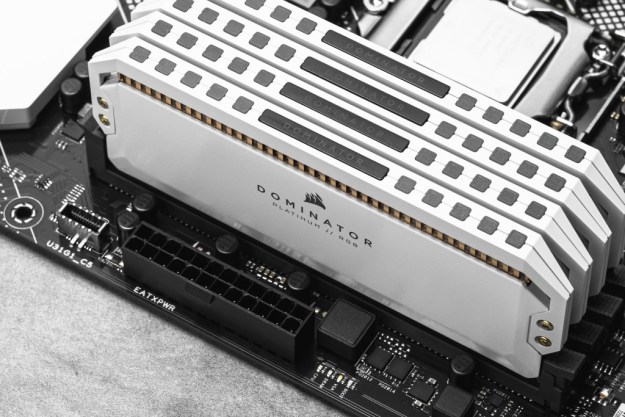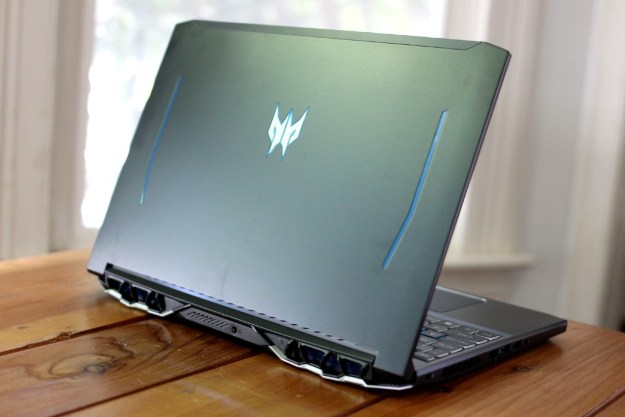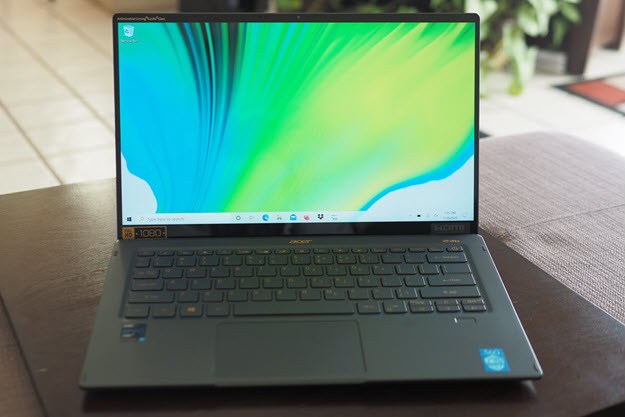
- Performance that lives up to Tiger Lake's promise
- Very thin and light
- Solid build quality
- Good keyboard and touchpad
- Below-average battery life
- A little expensive
I haven’t yet evaluated many Intel Tiger Lake systems, but I’ve seen enough to know that there are kinks to work out. So far, there hasn’t been a Tiger Lake laptop (officially reviewed or just benchmarked) that has consistently performed the way I expected. Now, Acer has released its newest Swift 5 based on the Tiger Lake platform — that’s not the only update to this premium ultralight — and so there’s another sample to evaluate.
Acer sent me a well-configured machine with an 11th-generation quad-core Intel Core i7-1165G7, 16GB of
Performance
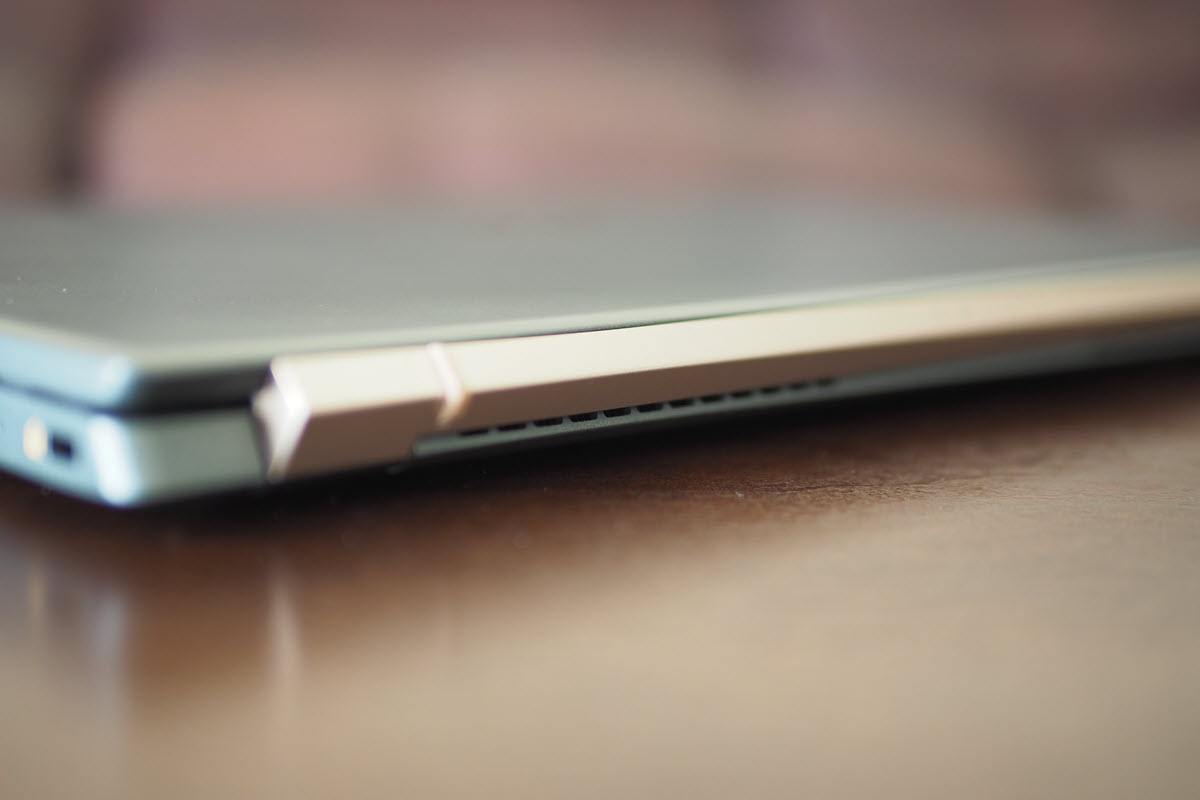
Let’s not waste time answering that question: So far, the Acer Swift 5 is the fastest Tiger Lake system I’ve personally reviewed or evaluated, and in Digital Trends’ experience is (barely) beaten only by the Tiger Lake reference machine Intel sent us to look at (which used the faster Core i7-1185G7).
Geekbench 5 tells part of the story. The Swift 5 scored 1,580 in the single-core test and 5,836 in the multi-core test. The higher-clocked reference laptop scored 1,563 and 5,995, meaning the Swift 5 more than held its own. Compared to the Asus ZenBook Flip S, which managed 1,535 and 4,913, the Swift 5 was significantly faster in the multi-core test. For some context, consider that the Microsoft Surface Book 3 13 running a 1oth-gen Core i7-1065G7 scored just 1,316 and 4,825.
It’s in our more real-world tests, though, that the Swift 5 showed off. First, in our Handbrake test that encodes a 420MB video as H.265, the Swift 5 took just over three minutes to complete the process. The Intel reference machine was only 17 seconds faster. The
Next, I tested the Swift 5 in Cinebench 20. It scored 2,091 in multi-core and 542 in single-core modes. The ZenBook 14 was slower in both normal (1,746 and 497) and performance (1,766 and 498) modes, and the ZenBook Flip S fell behind at 1,264 and 482. The Surface Book 3 13 managed 1,433 and 429, meaning that while only one of these other Tiger Lake
It’s also instructive to compare the Swift 5 to AMD Ryzen 4000
However, there’s one area where Tiger Lake competes well against AMD’s chips — Adobe applications. I ran our Premiere Pro test that encodes a two-minute
If you’re expecting enhanced gaming from the Swift 5 thanks to Tiger Lake and Intel’s Iris Xe graphics, then you’re in luck. You’ll get better than Intel’s previous Iris Plus graphics and almost equally as fast performance as a discrete GPU like the Nvidia GeForce MX350. I saw 53 frames per second in Civilization VI at 1080p and medium graphics, and 27 fps in ultra graphics. That beats the Lenovo IdeaPad Slim 7 (Intel version) with the MX350 by 2 fps at medium graphics. In Fortnite, the only other game I tested, the Swift 5 managed 31 fps at 1080p and high graphics, which dropped to 22 fps at epic graphics. The IdeaPad Slim 7 hit 37 fps in high graphics and 24 fps at epic graphics. The bottom line is that you can play some modern titles at 1080p if you keep the graphical detail in check — which is a serious improvement over Intel’s previous generation.
In short, the Swift 5 shows off what Tiger Lake can do, at least compared to the previous version of Intel’s CPUs. It’s very fast in real-world use, and I certainly noticed no slowdowns no matter what I threw at it during my review. As more Tiger Lake systems are released and the chipset’s inevitable initial problems are worked out, it will represent a significant upgrade for Intel users. And the Swift 5 will be right there in the hunt.
Design
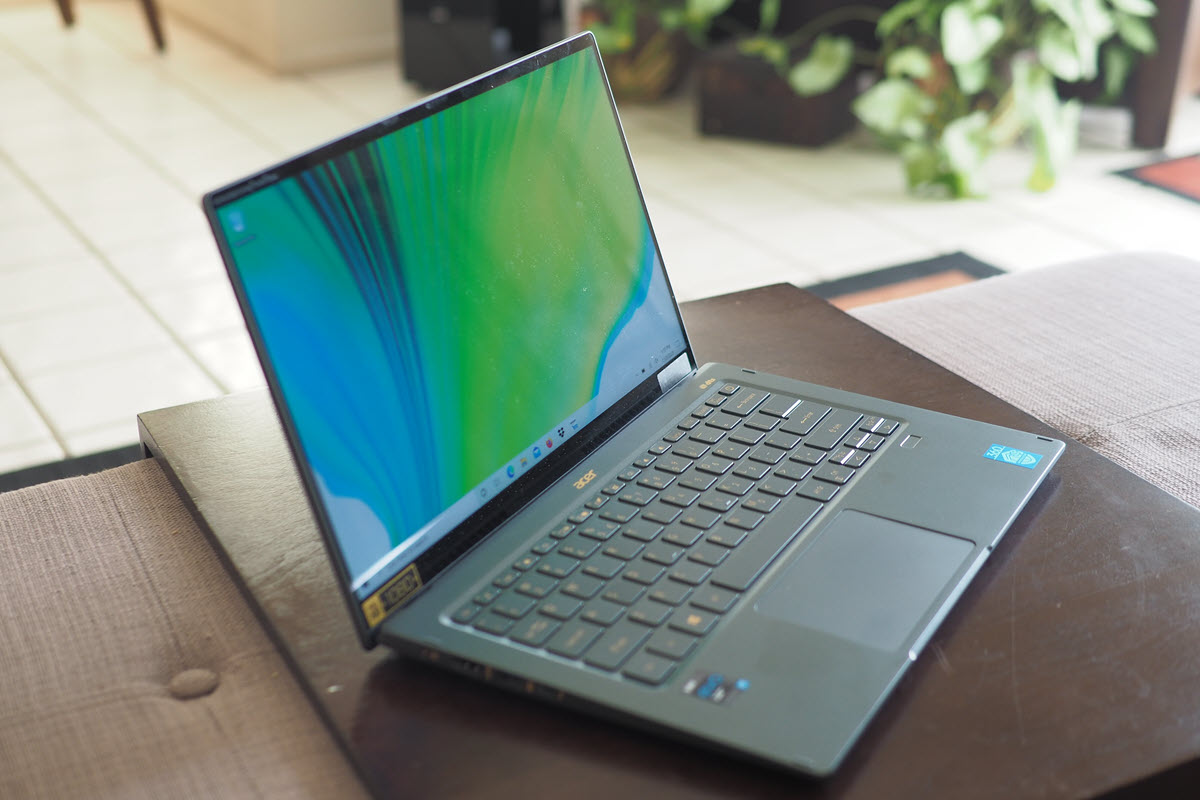
The Swift 5 was updated with 10th-gen CPUs earlier in 2020 but was otherwise identical to the 2019 version. The latest model of the Swift 5 brings more changes than just an update to Tiger Lake.
First, it’s a little heavier than the last time around, at 2.31 pounds versus 2.18 pounds. That means it’s still a remarkably lightweight 14-inch laptop, just not quite so much as the last version. It’s still 0.59 inches thick, though, making it a very thin laptop as well. That compares to the ZenBook 14 at 2.58 pounds and 0.54 inches. Clearly, 14-inch
The Swift 5’s light weight is due to its construction of magnesium-lithium and magnesium-aluminum alloys. According to Acer, these materials are two to four times stronger than aluminum but weigh 20-35% less. Certainly, the Swift 5 feels robust, with a lid that resists bending unless you apply way too much pressure, a keyboard deck that’s as rigid as any, and a bottom chassis that has only the tiniest bit of give. So, the Swift 5 feels light but it doesn’t feel cheap, which is what you get when you use plastic to cut the pounds. I’d like to see the hinge redesigned to open with one hand, but it does remain well in place.
The laptop’s durability extends to the chassis surface, where Acer used a Micro-Arc Oxidation process to create a finish that’s hard like ceramic and resists scratches and corrosion. That’s a good thing, because my review unit sports the optional mist green color (gold is the other option) that’s quite subtle and elegant and deserves to be protected. The chassis itself is relatively simply designed compared to extremes like HP’s gem-cut Spectre x360 line, but the color — including the yellow accents and keyboard lettering — and angles lend the laptop some overall good looks.
The chassis’ surface isn’t just more durable, it’s also more resistant to microbes. Acer has developed what must be the first complete laptop antimicrobial solution, which involves two primary features that I’ve never seen on another machine. First, there’s a silver-ion antimicrobial agent in a coating on the surface of the chassis, keyboard, hinge, fingerprint reader, and even the labels attached to the laptop. Even the rubber feet are manufactured using a silver-ion antimicrobial material. Second, the screen uses Corning’s Antimicrobial Gorilla Glass, the world’s first that bakes in silver ions to provide antimicrobial properties.
I won’t go into all the details here — you can visit this page to learn more — but the overall solution promises a greater than 99.9% reduction rate involving a “broad range of bacteria.” Notice that this says nothing about viruses, so the solution — to my knowledge — does not protect against the coronavirus that causes COVID-19. Even so, if you want your laptop bacteria-free, Acer is the first to take you seriously.
Note that the Swift 5 is Intel Evo-certified. That promises a few things, including an 11th-gen CPU (natch), Thunderbolt 4 support, consistent battery responsiveness, wake from sleep in less than a second, nine or more hours of battery life, and four hours with just 30 minutes of charging. As we’ll see later, I’m not sure the laptop lives up to the real-world battery life promise, but it appears to meet the rest of the Evo certification requirements.
Finally, connectivity is a strength with the thin-and-light Swift 5. On the left-hand side, there’s a proprietary power port (the laptop will charge via USB-C, though), a full-size HDMI 2.0 port with HDCP support, a USB-A 3.2 port, and a USB-C port with
Display
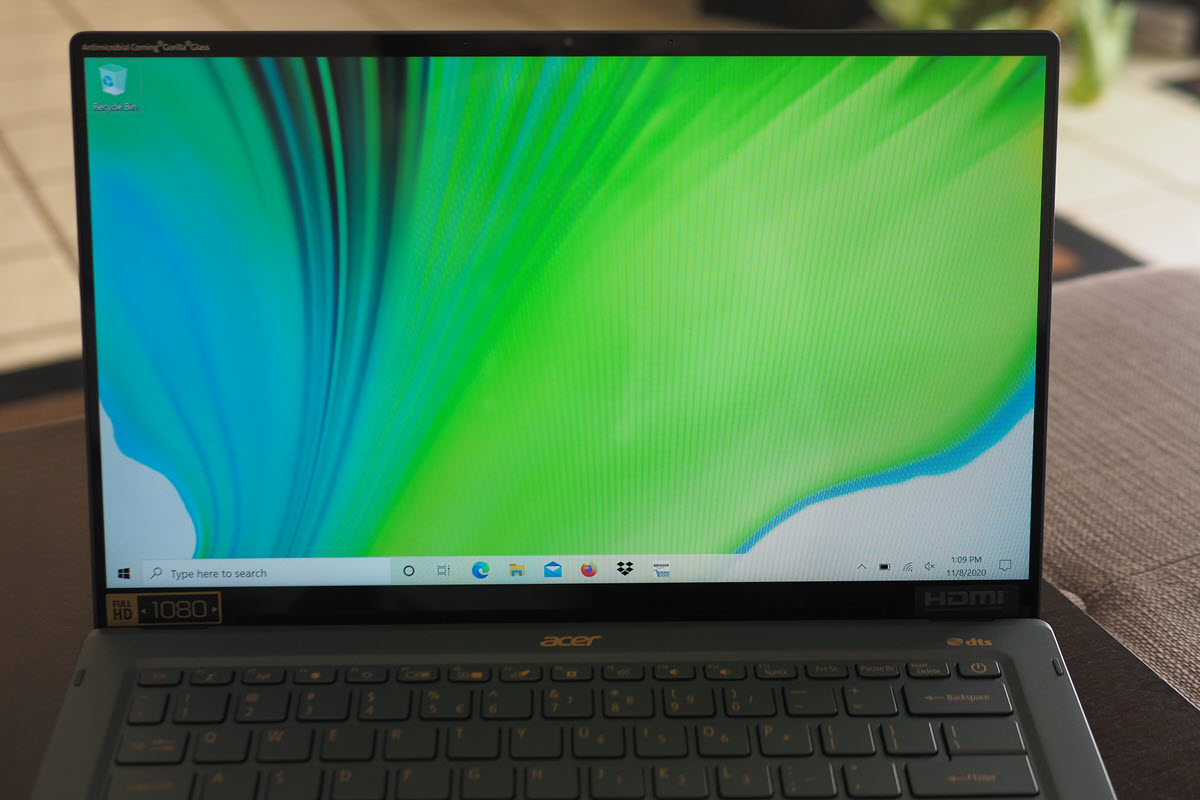
We’ve reached a point where most premium
First, the Swift 5’s 14-inch touch-enabled display exceeded our preferred 300 nit brightness threshold at 327 nits, and its contrast ratio barely missed our preferred 1000:1 at 950:1. That makes for a great display for productivity work unless you’re working outside in direct sunlight. An example of a similar laptop with a slightly better display in these metrics is the
Next, the Swift 5’s colors are good but not great, just like most premium
In real-life use, the Swift 5’s display was a pleasure to use, with plenty of brightness for my needs and black text that jumped off the page thanks to the (almost) excellent contrast ratio. Binging Netflix was pleasant enough thanks to a perfect gamma of 2.2, so nothing was too bright or too dark. I have no complaints whatsoever about the display.
The audio quality wasn’t quite up to the same standard. First, the dual speakers couldn’t put out much volume, although it was undistorted at 100%. Mids and highs were fine, but (as usual) bass was lacking. The audio system is fine for watching the occasional YouTube video, but if you want to watch TV shows or movies or listen to music, then you’ll want to use a pair of
Keyboard and touchpad
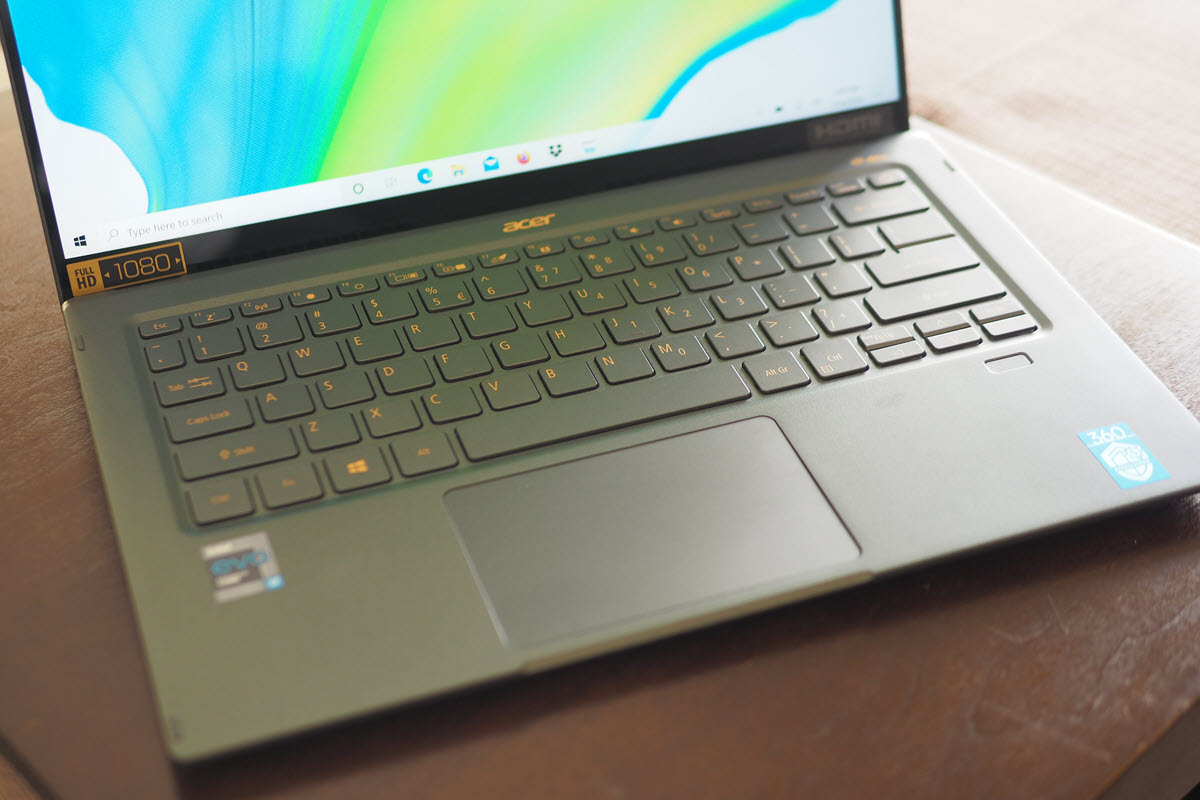
The standard island keyboard has good spacing and keycaps that were just a tad too small for my liking. The mechanism had a nice click to it but was a bit loose, and so I didn’t find it quite as precise as my favorite keyboards, HP’s Spectre keyboard and the Magic Keyboard on Apple’s latest MacBooks. As a writer, I’m particularly sensitive to this aspect of a laptop’s design, and while the Swift 5’s didn’t delight me, it will likely make most users happy.
I do like the coloring, with letters that are a light yellow and backlighting (only on and off, unfortunately) that works in both bright and dark environments. That’s an improvement over some keyboards, like the one on the most recent Dell XPS 13, whose backlighting makes the letters almost impossible to read if it’s turned on and there’s any ambient lighting.
The touchpad is moderately sized and uses Microsoft’s Precision touchpad drivers. As such, it was competent at swiping and using Windows 10’s multitouch gestures — something that can be said about most touchpads lately. The touch display was precise, responsive, and quite welcome.
Windows 10 Hello support was provided by a fingerprint reader located to the upper right of the touchpad. It was quick and accurate throughout my testing.
Battery life
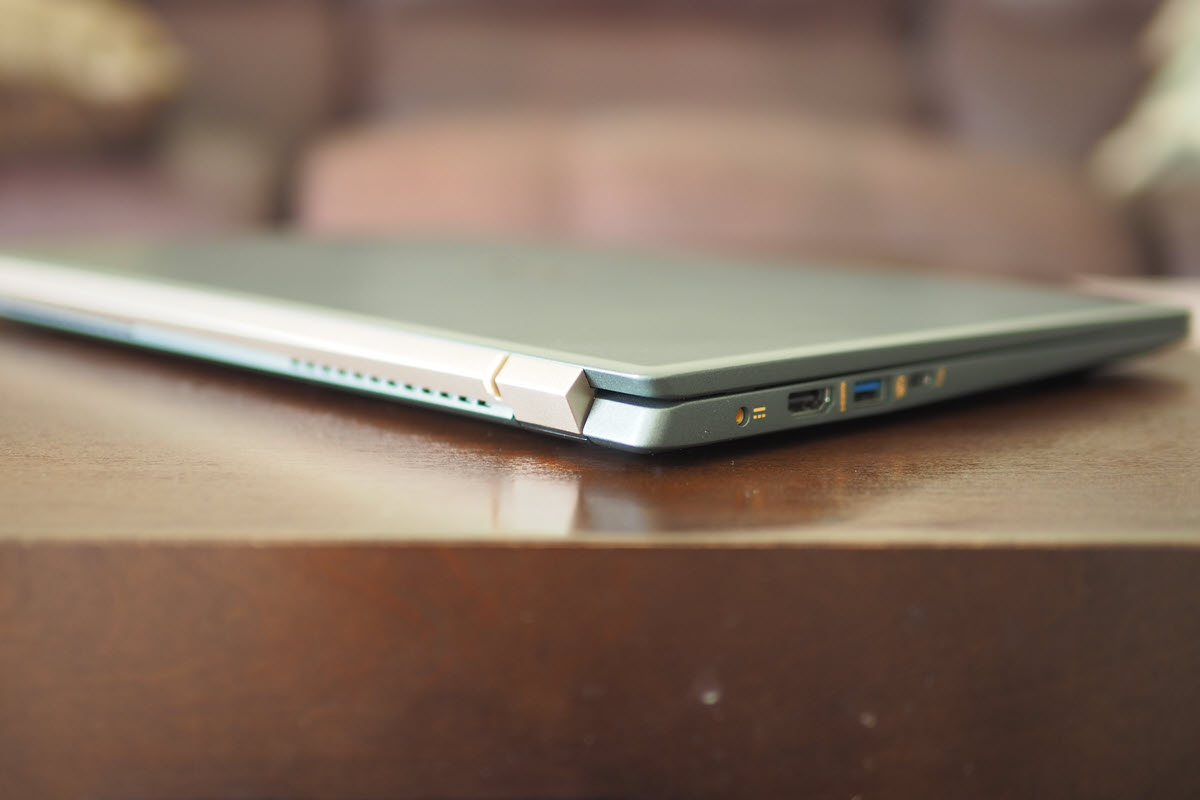
The Swift 5 packs 56 watt-hours of battery capacity into its thin frame, an average amount for a laptop with a 14-inch Full HD display. We don’t have that much experience with Tiger Lake’s efficiency, so I wasn’t sure what to expect.
Usually, we use the Basemark web benchmark to test a laptop’s battery life when stressing the CPU and GPU. So far, though, every Tiger Lake laptop I’ve tested, including the Swift 5, won’t complete that test. So, I can’t say how long the laptop will last when you’re working it hard.
In our web benchmark that loops through a series of complex web pages, and which represents the best indication of productivity battery life of our tests, the Swift 5 lasted just under eight hours. That’s an average score that is beaten by the Dell XPS 13 with its 10th-gen Core i7 that lasted over 11 hours and the Tiger Lake
Finally, the Swift 5 lasted 11.5 hours in our video test that loops a Full HD Avengers trailer. The XPS 13 managed 14.5 hours and the ZenBook 14 12.25 hours, meaning the Swift 5 fell behind in this test as well.
Ultimately, battery life was a bit disappointing but not terrible. If you’re not that hard on the CPU and GPU then you might make it through a full day’s work, but if your tasks are at all demanding, then you’ll need to keep your power adapter with you.
Our take
The Swift 5 improves on the previous generation in everything but its weight, and it’s not exactly heavy. It makes great use of Intel’s Tiger Lake platform, and it uses a couple of innovative processes to make its chassis surface more robust and resistant to microbes.
It’s also a nice-looking laptop and has few weaknesses. As far as 14-inch
Are there any alternatives?
The
If you want the flexibility of a 2-in-1, then the HP Spectre x360 13 is an excellent alternative. It uses Intel’s last-generation chips and so isn’t as fast, but it offers a more striking look, a stunning OLED display, and the morphing nature of a 2-in-1.
Finally, you could consider the Dell XPS 13, which is one of the best
How long will it last?
The Swift 5 is well-built and robust, and it equips modern components that will power your productivity needs for years. The one-year warranty is disappointing in a premium laptop, but it’s industry standard.
Should you buy it?
Yes. The Swift 5 is thin, light, and powerful, and it’s the first shipping Tiger Lake laptop we’ve tested that lives up to the chip’s performance promise.
Editors' Recommendations
- Intel Raptor Lake breaks the 6GHz barrier, and it’s not even the flagship
- Intel Raptor Lake finally makes DDR5 memory worth it
- Acer Swift X 16 hands-on review: A tantalizing preview
- Acer Swift X debuts Arc graphics, Intel’s most powerful discrete GPU yet
- Intel Alder Lake could launch early, timed with the next version of Windows


